These scientists are taking an unconventional approach to save forests: Cutting down trees
RICHMOND – Felled trees littered the forest floor in the Hillsdale Preserve.
Loggers had cleared swaths of land across a sliver of the 1,825-acre state property that straddles the Beaver River.
The trees, thousands in all, weren’t taken down for mulch or firewood. Many had degraded too much to be used for anything, standing dead for several years after succumbing to a combination of drought and the region’s last big spongy moth infestation in the late 2010s. Others that were still alive were too small to be of much value.
The trees in this 45-acre corridor had instead been cut down as part of a project that is researching ways of protecting the long-term health of North America’s forests as summers become drier and hotter.
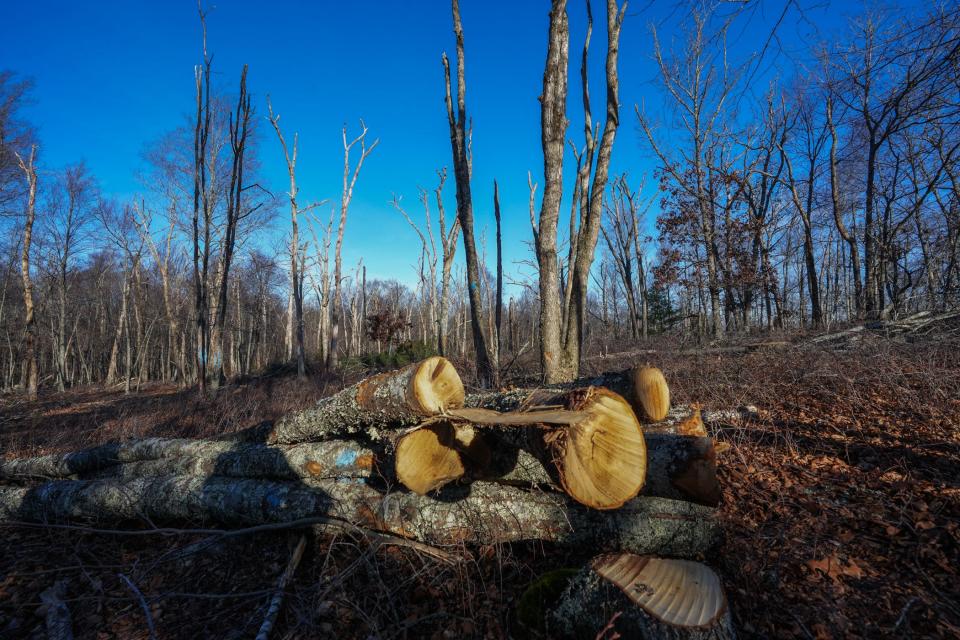
The Hillsdale Preserve is one of more than a dozen sites in the United States and Canada where forest scientists are studying different management techniques that include expanding gaps in the canopy to foster the growth of native trees and introducing hardier species of trees that may be able to better withstand the effects of climate change.
The hope is that if the methods being tested in Richmond and elsewhere are found to be successful, they can be duplicated by state and federal agencies, as well as private landowners, to ensure that forests that are vital to a healthy environment survive as the climate continues to change.
"We know that our forests are part of the solution to climate change, but we also know that they’re stressed by its effects,” said Christopher Riely, forestry specialist and research associate with the University of Rhode Island.
Drought, heat and pests a triple threat to Rhode Island's forests
When the first Europeans arrived in the early 1600s in what would become Rhode Island, as much as 95% of the land was forested. Within just a few generations, however, settlers had clear-cut the vast majority of the area’s woodland to make way for farming. The first forest survey, in 1767, found that only 31% of the land remained forested, according to the University of Rhode Island.
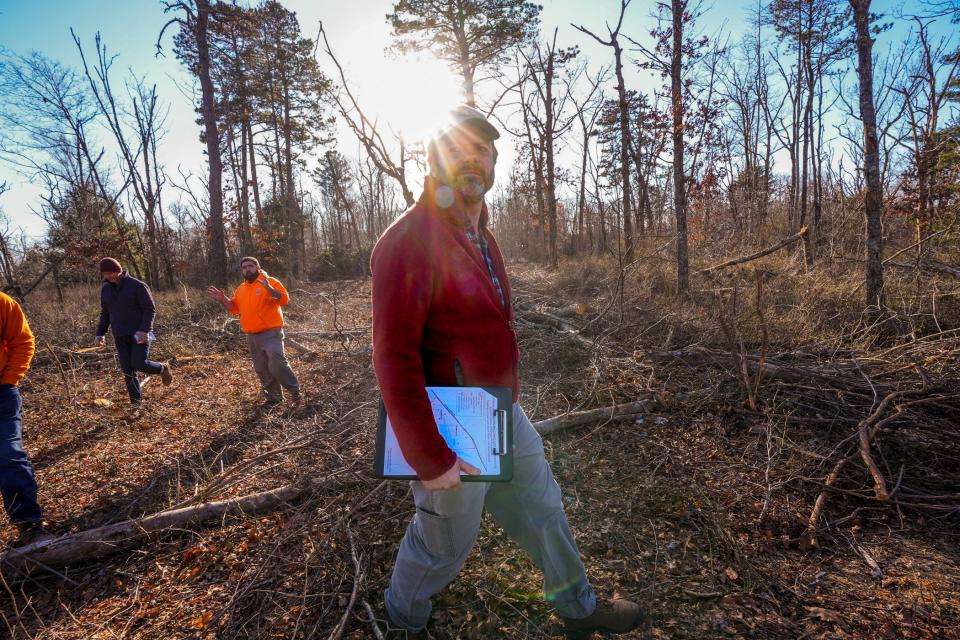
Agriculture in the state peaked in the early 1800s, and as families moved west in search of more fertile land, abandoned farms were slowly reclaimed by forests. Regeneration continued until the 1950s, when the trend started reversing as developers carved out more and more open space for housing. Today, about half of Rhode Island is still forestland.
The state’s forests have a wide range of benefits, providing habitat to wildlife, removing pollutants from the air, keeping drinking water sources clean, absorbing floodwaters, and sequestering nearly 27 million tons of carbon, according to the Rhode Island Department of Rhode Island Management.
But development pressure continues, most prominently in recent years from private companies that are building sprawling solar farms. And so, too, do threats from disease and insects. Rhode Island’s trees have long suffered from periodic outbreaks of spongy moths, winter moths and forest tent caterpillars that feed on their leaves.
But the number of threats is growing. Warmer winters have allowed Southern pine beetles to expand their range northward, posing a risk to the area’s pines. The emerald ash borer, an invasive insect from Asia, is laying siege to ash trees in Rhode Island and other states. The spotted lanternfly, another invasive pest, has more recently reached the state. And beeches are being wiped out by a microscopic worm that appeared in Rhode Island four years ago.
Trees can often survive defoliation by budding new leaves, but successive years of damage will gradually weaken them to the point that they can no longer recover.
More extreme summers are making it even harder by depriving trees of much-needed moisture. In 2016, 2020 and 2022, Rhode Island and the rest of New England experienced drought conditions that the National Oceanic and Atmospheric Administration has described as “historic.”
It’s in the context of these changes that the experiment in the Hillsdale Preserve is taking place.
Cutting down trees to make way for regrowth
The research is being conducted as part of a larger project known as Adaptive Silviculture for Climate Change. In the narrowest sense, silviculture is the science of growing trees, but it more broadly encompasses techniques for managing forests for wildlife habitat, timber production and other goals.
The ASCC project aims to test methods to protect different forest ecosystems from the impacts of climate change. Trials are being conducted in British Columbia, Georgia, Colorado, Ohio and other parts of the United States and Canada.
The Hillsdale site is part of a trial coordinated by the University of Connecticut that’s focused on oak forests in Southern New England. Riely is overseeing the research in Rhode Island, along with William Walker, supervising forester with the DEM, which manages the Hillsdale property. They’re testing three techniques.
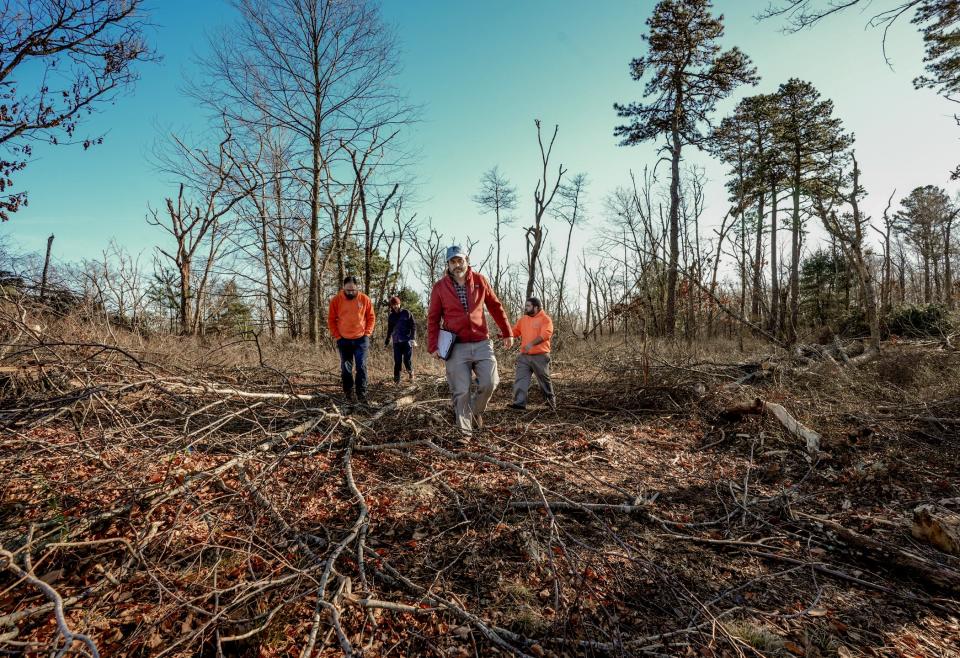
On one section of the land, they’re trying to enhance the natural resistance of the forest to the changing conditions. The aim is to maintain the current diversity of species – which include tulip poplar, black birch and white ash along with the dominant species of oak and hickory – while improving overall forest health. The only living trees that were removed were invasive species, though not many were found. Fewer dead trees were taken down, and wood debris was left on the ground. Only light clearing of the canopy was done.
In another section, they’re testing what they’re calling resilience. They cut down black birch and red maple that create mid-canopy shade in an effort to promote the growth of oak saplings. They also took out more dead trees as part of a larger effort to support new growth. Here, they’ll plant native tree species that have shown hardiness to more extreme summers. They include black, scarlet, white and chestnut oak, as well as hickory and hybrid chestnut.
A third area underwent the most sweeping changes, seeing the highest number of dead trees removed and the creation of the largest gaps in the canopy. This is known as the transition zone, and it will represent what a New England forest could look like in the not-too-distant future. Here, the researchers will plant oak species that are normally found farther south or west, types adapted to hotter areas such bur, chinkapin, Shumard, post and Southern red oak.
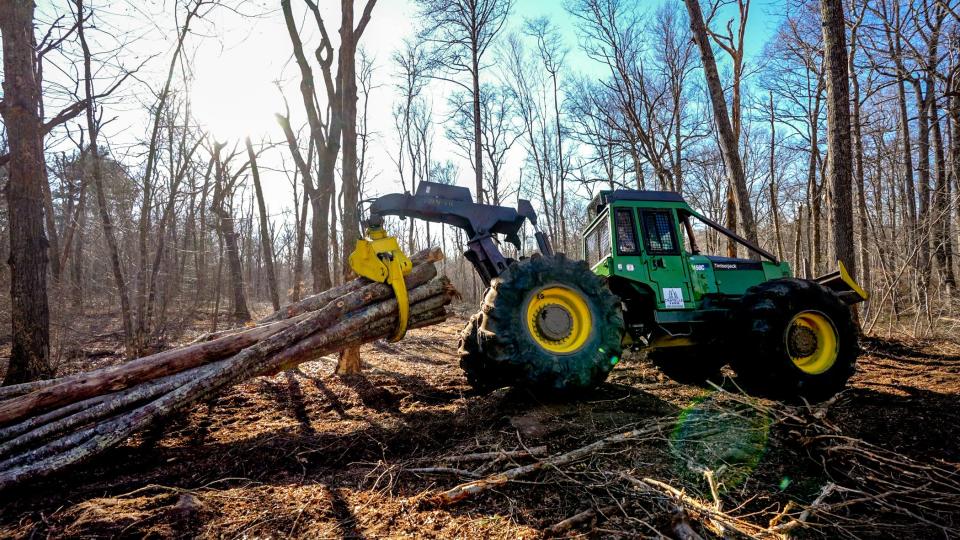
The new planting won’t come until the spring. As Riely, Walker and Tee Jay Boudreau, deputy chief of the DEM’s Division of Forest Environment, walked through the Hillsdale Preserve on a recent afternoon, parts of the forest looked pretty bare.
“If you came upon this without any context, you’d wonder what’s going on,” Riely said.
Research taking place in a damaged forest
The Hillsdale Preserve is the logical place for the experiment for a couple reasons.
In 1916, Wall Street trader Theakston de Coppet bought the land that encompasses the remnants of a Civil War-era mill village and maintained it as a hunting and nature preserve. Upon his death in 1937, he willed it to the state as a “forest reservation and sanctuary for the scientific care, study and preservation of all desirable plant and animal life.”
But de Coppet stipulated that the transfer would be completed only after the last of his heirs and life tenants on the property passed away. That finally happened in 2014, and the property was soon opened to the public as a site of passive recreation. Hunting is no longer allowed there.
Within a few years, however, the forest was devastated by a surge in the population of the spongy moth, an invasive species known until recently as the gypsy moth. The moth’s caterpillars ravaged hardwood forests across southern and western Rhode Island, as well as areas of Connecticut and Massachusetts, across three successive summers between 2015 and 2017.
The defoliation was compounded by a prolonged drought that starved woodlands of nourishment; coincident outbreaks of other leaf-eating caterpillars; and an ongoing attack by boring beetles that prey on weakened trees. The destruction was so bad it could be seen from space.
The Hillsdale site was hit as hard as anywhere else in Rhode Island. In 2018, in the immediate wake of the ruin, Walker identified many thousands of dead trees across the property, likening the scene to something you’d see after a nuclear war.
Five years later, the damage is still apparent.
Rhode Island is at 'the cusp of transition'
Chatelle Farm, a Coventry logging company, started removing trees from the preserve in November. Owner Jared Chatelle and his father were still at work as the holidays neared.
The DEM allows limited timber harvesting on state lands. Since 2015, about 750 of the 40,000 acres managed by the agency have been logged. Walker, who supervises the harvesting program, says that thinning forests can help spur new growth, impede the spread of invasive insects and blights, and prevent wildfires.
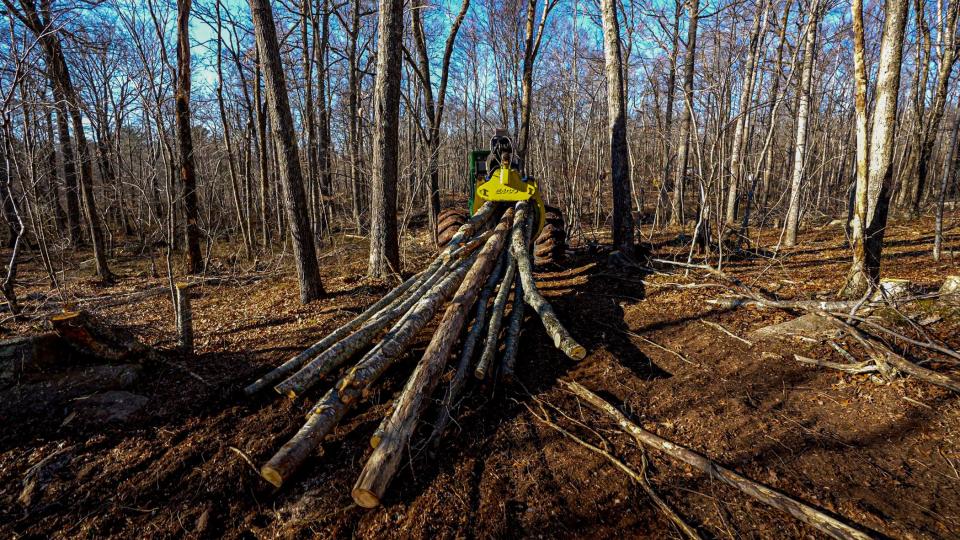
Unlike timber contracts in which tree companies pay the state for the rights to harvest, the DEM is paying Chatelle for his work at the Hillsdale Preserve.
“Because this wood isn’t worth anything,” he said.
The work is also different from a commercial operation because Chatelle isn’t clear-cutting the land. Many of the dead trees in the research area were left standing. Known as snags, dead trees that remain upright are important foraging and nesting habitat for woodpeckers, raccoons and many other animal species. Their roots also sequester carbon underground.
As Riely, Walker and Boudreau walked through the preserve, they talked about the threats facing Rhode Island’s forests and what they hope to learn through the research project.
They crossed stone walls, evidence of the land’s past use as pasture, and skirted tangles of greenbrier. The vine is native, but it has grown aggressively in the absence of tree cover, and its thickets are shading out oak saplings.
Deer are also an impediment to new growth. They graze on saplings, so the new trees being planted will have to be protected with fencing.
Some of the species that will be tested aren’t native to New England, but they’re not considered invasive. Some are already found nearby, and their range is already extending naturally into the region as air temperatures increase.
The Department of Agriculture in 2023 updated the nation’s plant hardiness zone maps, which guide what plants and trees can be grown where, to reflect an average increase in temperatures of 2.5 degrees across the contiguous United States since the last update to the maps in 2012.
“We’re right at the cusp of transition,” said Boudreau. “This happens to be a spot that’s changing already.”
Hoping to save forests by diversifying species
Because trees grow slowly, it will take years before the researchers know which techniques work best.
But they’ll be able to see signs of success – or failure – along the way. At the Hillsdale property, they delineated 20 monitoring plots where they’ve already conducted two years of baseline study. They’ll return every year to look for even the smallest changes, from new growth to more death.
Walker tries his best to do some forest monitoring, but the DEM’s forestry department is short-staffed, so most of its work is reactive, coming after insect damage or wildfires.
“It’s nothing like what’s being done here with these monitoring plots,” Walker said.
Riely worries that the types of forest disturbances that Rhode Island has experienced in recent years tied to drought and pests will grow in frequency.
“Yes, I fear that we will,” he said.
“It’s all the more reason to make these areas more resilient,” Walker added.
Diversifying tree species is one hedge against the threats. Some types of trees may not succumb to defoliation as easily. Others may not need as much water. But there are no simple answers. The escalating pace of change is forcing a rethink of forest science and how forests are managed.
“The fact that we’re cutting these trees down doesn’t mean we’re going to see a Wal-Mart here,” Walker said.
“We’re doing this because we want to see the forest remain as forest,” Riely said.
This article originally appeared on The Providence Journal: An experiment in RI's Hillsdale Preserve could help save America's forests

